The Best Shrimp Dirty Rice Recipe for Soul-Warming Meals
Steamy Louisiana kitchens buzz with the aroma of a classic shrimp dirty rice that promises bold, soulful flavors.
Generations of home cooks have perfected this spicy one-pot wonder across southern kitchens.
Tender Gulf shrimp dance among seasoned rice kernels, creating a heartwarming meal that connects you to rich culinary traditions.
Cajun spices weave magic through each fragrant bite, telling stories of New Orleans’ vibrant food culture.
Hearty and satisfying, this dish brings together robust ingredients that celebrate southern cooking techniques.
Every forkful promises a delightful journey through Louisiana’s most cherished comfort food.
Come hungry and ready to savor an authentic taste of southern hospitality.
Shrimp Dirty Rice: Spice, Shrimp, And Simple Perfection
Dirty Rice With Shrimp Ingredient Combo
Protein:Rice and Liquid:Vegetables and Aromatics:Seasonings:Cooking Fat:Cooking Process for Shrimp Dirty Rice
Step 1: Kickstart the Rice Cooking
Prepare rice using chicken broth for extra flavor.
Let the rice rest and cool while you work on other ingredients.
Step 2: Sizzle the Sausage
Heat olive oil in a large skillet over medium heat.
Brown the sausage, then drain away excess grease to keep the dish light and tasty.
Step 3: Chop and Sauté Aromatic Vegetables
Prep and add these vegetables to the skillet:Cook until the vegetables become soft and release their delicious fragrance.
Step 4: Toss in Succulent Shrimp
Add shrimp to the skillet and cook until they turn a beautiful pink color, about 2-3 minutes.
The shrimp should look plump and juicy.
Step 5: Create Flavor Magic
Mix in the cooked rice and these bold seasonings:Stir everything together so each bite is packed with incredible flavor.
Step 6: Let Flavors Dance
Continue cooking for 2-3 minutes, allowing all the ingredients to mingle and create a harmonious dish.
Step 7: Finish with Fresh Herbs
Sprinkle freshly chopped green onions and parsley on top.
Serve hot and enjoy the burst of Cajun-inspired goodness.
Dirty Rice With Shrimp – Flavor and Spice Building Secrets
Reheat Dirty Rice Shrimp For A Bold Bite
Flavor Sides for Shrimp Dirty Rice
Dirty Rice with Shrimp in Cajun Comfort Mode
FAQs
Dirty rice gets its name from the dark color and rich flavor created by adding meat, typically chicken liver or ground meat, which gives the rice a “dirty” appearance and complex taste.
The recipe includes Cajun seasoning and cayenne pepper, which add a moderate level of heat. You can adjust the spiciness by reducing or increasing these spices to suit your preference.
Absolutely! You can substitute shrimp with chicken, andouille sausage, ground beef, or even make a vegetarian version using beans or plant-based protein.
The secret is layering flavors by using chicken broth instead of water, sautéing vegetables and meats thoroughly, and allowing the spices to blend during the final cooking stage.
Print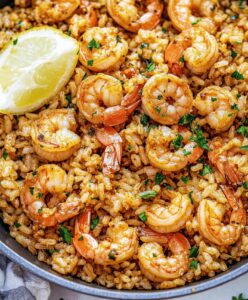
Shrimp Dirty Rice Recipe
- Total Time: 35 minutes
- Yield: 6 1x
Description
Spicy Louisiana “Dirty Rice” blends succulent shrimp with robust Cajun seasonings, creating a hearty one-pot marvel that dances with bold southern flavors. Zesty rice absorbs rich meats and aromatic spices, delivering a classic comfort dish that will transport diners straight to New Orleans’ soulful culinary landscape.
Ingredients
Proteins:
- 1 pound (1 lb) shrimp, peeled and deveined
- 1/2 pound (1/2 lb) ground sausage
Vegetables and Aromatics:
- 1 small onion, diced
- 1 green bell pepper, diced
- 2 celery stalks, diced
- 3 cloves garlic, minced
- 2 green onions, sliced
Base and Seasonings:
- 1 1/2 cups long-grain white rice
- 3 cups chicken broth
- 1 tablespoon olive oil
- 1 teaspoon smoked paprika
- 1 teaspoon Cajun seasoning
- 1/2 teaspoon dried thyme
- 1/2 teaspoon black pepper
- 1/2 teaspoon salt
- 1/2 teaspoon cayenne pepper (optional)
- 2 tablespoons fresh parsley, chopped
Instructions
- Prepare rice by simmering in rich chicken broth, creating a flavorful base for the dish.
- Render sausage in a spacious skillet, allowing fat to release and meat to caramelize, then drain excess oil.
- Introduce aromatic trinity of onions, bell peppers, and celery into the skillet, gently sweating until vegetables become translucent and tender.
- Incorporate minced garlic, stirring briefly to release its fragrant essence without burning.
- Add succulent shrimp to the vegetable mixture, cooking until they transform from translucent to a vibrant pink, indicating perfect doneness.
- Fold cooked rice into the skillet, blending with sausage and seafood mixture.
- Elevate the dish’s complexity by sprinkling smoked paprika, Cajun seasoning, dried thyme, freshly cracked black pepper, and a hint of cayenne for warmth.
- Allow ingredients to meld together, intensifying flavors and creating a harmonious one-pan meal.
- Finish with a generous garnish of freshly chopped green onions and parsley, adding bright color and fresh herbaceous notes.
Notes
- Swap chicken broth with vegetable broth for a vegetarian version that maintains deep flavor complexity.
- Select medium-sized shrimp for consistent cooking and best texture throughout the dish.
- Toast spices briefly before adding to enhance their aromatic qualities and develop richer flavor profiles.
- Consider reducing cayenne pepper for milder palates or adding extra for heat lovers, allowing personalized spice control.
- Prep Time: 10 minutes
- Cook Time: 25 minutes
- Category: Dinner, Lunch
- Method: Sautéing
- Cuisine: Cajun
Nutrition
- Serving Size: 6
- Calories: 390
- Sugar: 1 g
- Sodium: 800 mg
- Fat: 18 g
- Saturated Fat: 5 g
- Unsaturated Fat: 10 g
- Trans Fat: 0 g
- Carbohydrates: 36 g
- Fiber: 2 g
- Protein: 26 g
- Cholesterol: 160 mg

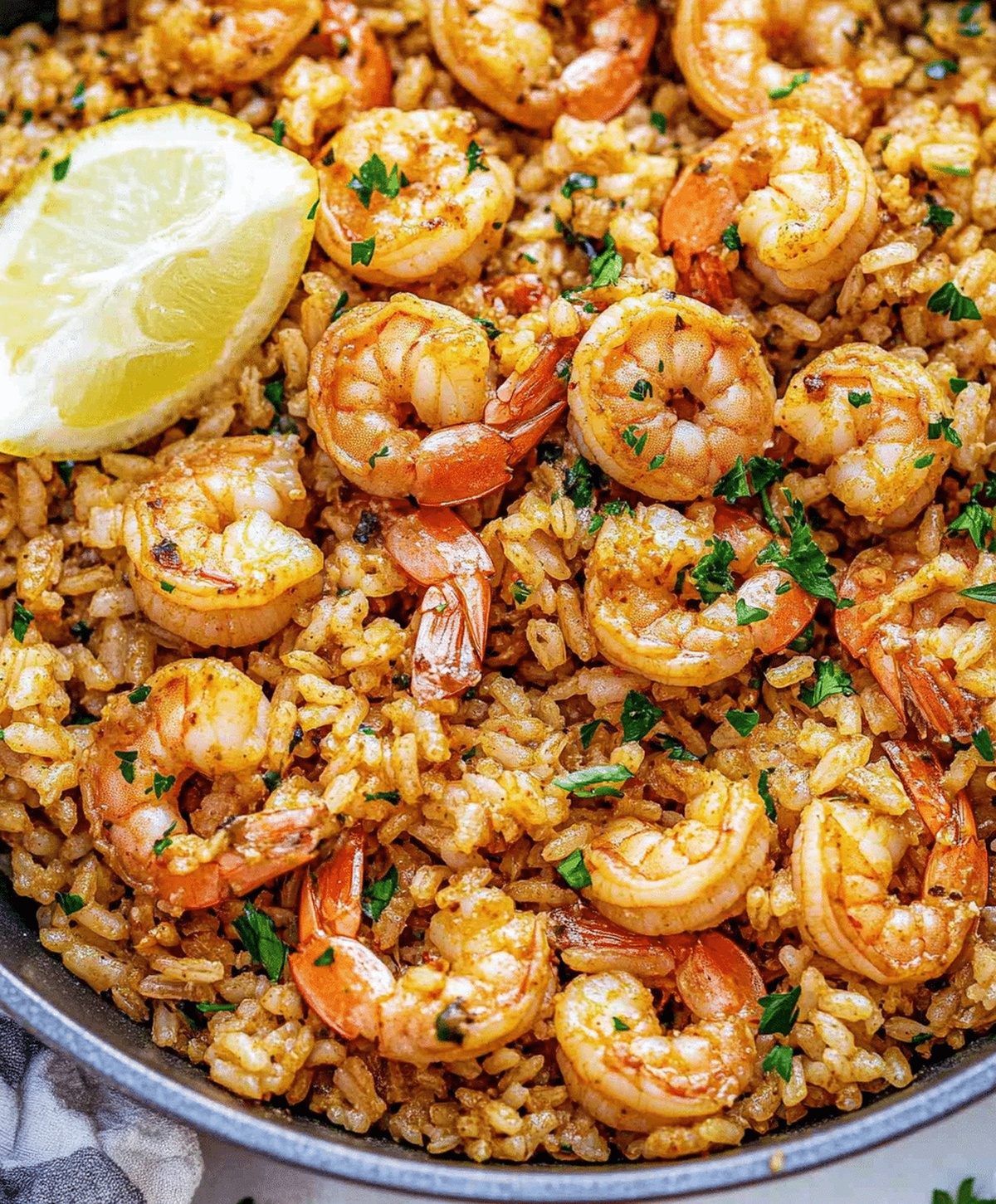
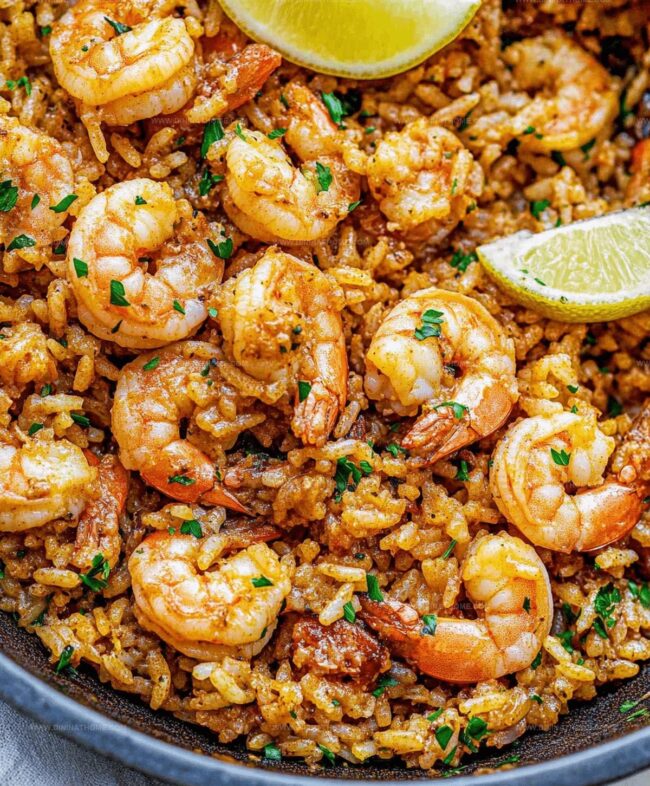
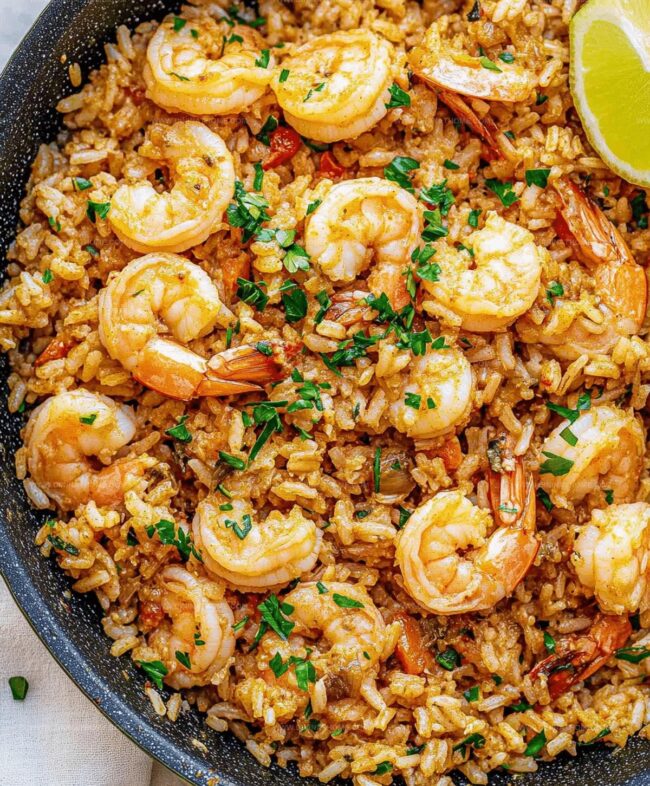
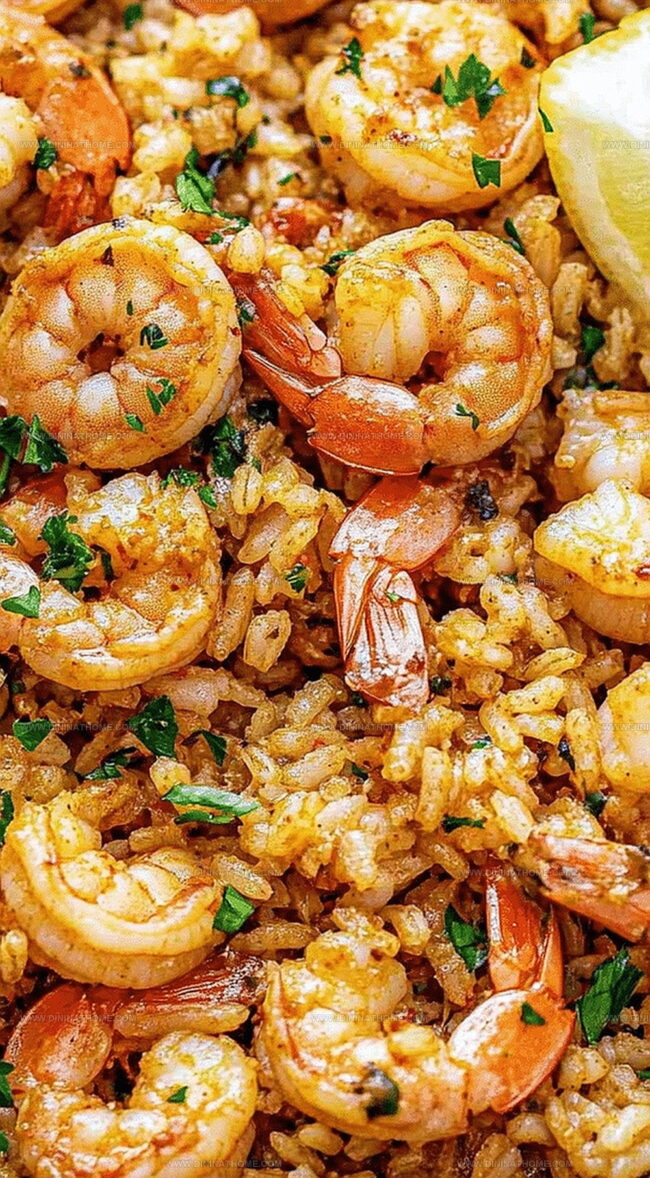
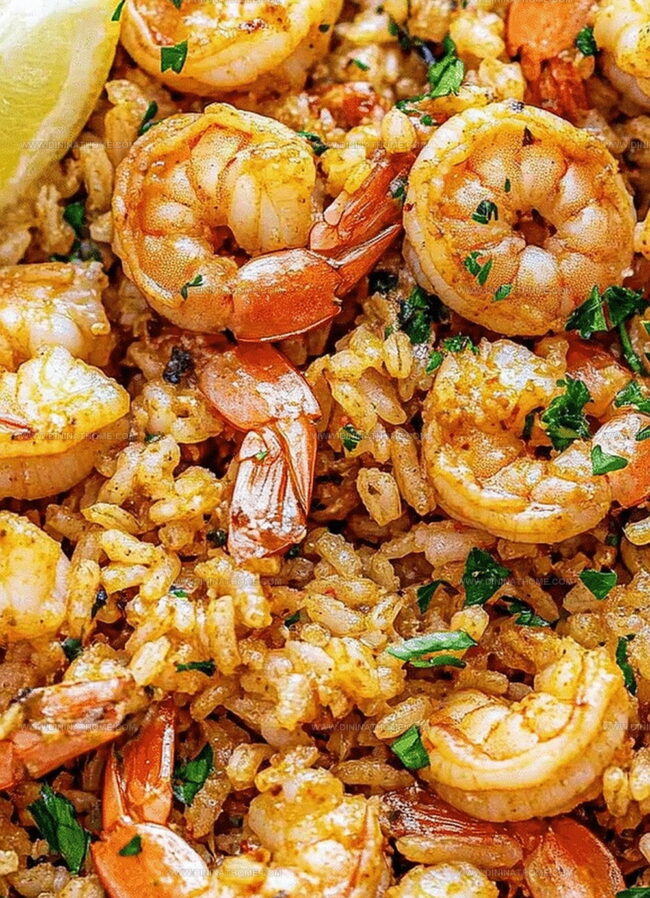
James Walker
Lead Recipe Developer & Culinary Educator
Expertise
Southern Cuisine & Farm-to-Table Cooking, Recipe Development & Testing, Culinary Education & Instruction
Education
School: Auguste Escoffier School of Culinary Arts
Program: Diploma in Culinary Arts and Operations
Focus: Comprehensive training in classical and modern culinary techniques, kitchen operations, and farm-to-table practices.
James didn’t learn cooking from a TV show, he learned it from busy kitchens, family gatherings, and long afternoons spent testing recipes the hard way.
After training at the Auguste Escoffier School of Culinary Arts, he brought his love for real, down-to-earth food to every dish he makes.
At Dining At Home, James loves building recipes that feel familiar but still have something special, like adding a twist to a classic or making a slow Sunday dinner feel brand new.
When he’s not in the kitchen, you’ll probably find him swapping garden tips at the farmers’ market or teaching his daughter how to flip pancakes without a mess (almost).